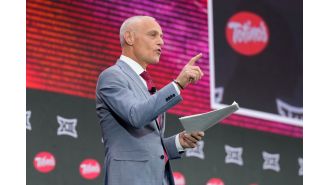Mariam Elba contributed research.
Native American Families Are Being Broken Up in Spite of a Law Meant to Keep Children With Their Parents
After fighting to win back her parental rights, a young Native American mother prevailed. Then the state came for her second child.
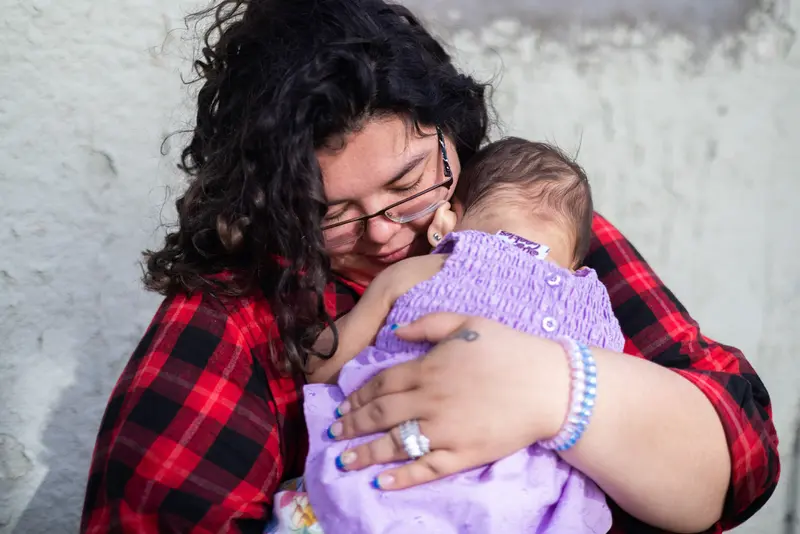

Series: Overpolicing Parents
How America’s CPS Dragnet Ensnares Families
When Cheyenne Hinojosa saw her husband, Jose, and her mother charging through the doors at the gas station where she worked, she assumed something terrible had happened. In Jose’s hands was a stack of papers — the latest legal filing in Hinojosa’s long-running child protective services case regarding her then-3-year-old daughter.
In 2018, not long after Hinojosa’s daughter turned one year old, a South Dakota Department of Social Services caseworker had come to Hinojosa’s home in Huron and taken her away. Two years later, a county judge terminated Hinojosa’s parental rights, an act so permanent that in the legal world it’s considered the death penalty of child welfare cases.
The decision meant that Hinojosa was no longer legally her daughter’s mother.
“I felt my heart just stop,” Hinojosa said of the moment she heard the judge’s ruling.
She asked her attorney to appeal, though he warned Hinojosa not to get her hopes up. In his four-decade career, he’d never had a parental rights termination ruling reversed. For almost a year, Hinojosa barely had contact with her daughter.
All that changed in July of 2021, when her husband reached across the gas station counter and handed her documents with the words “Supreme Court of the State of South Dakota” near the top. Toward the end was the court’s unanimous decision restoring Hinojosa’s parental rights. She started to cry.
“I'm back in the game,” Hinojosa remembers thinking.
In their ruling, the justices seemed particularly disturbed by one important aspect of the case: As an enrolled member of the Lower Brule Sioux Tribe, Hinojosa and her family should have had powerful federal protections under the 1978 Indian Child Welfare Act.
Under ICWA, the state Department of Social Services and the local court had a much higher legal bar to meet than in most child welfare cases before they could terminate Hinojosa’s parental rights. And according to the state Supreme Court, the case against her had failed to meet that higher standard, which it noted was created by the law’s authors “to prevent the breakup of the Indian family.”
Against the odds, Hinojosa became one of a small number of parents to have their rights restored by South Dakota’s highest court. It was a moment of validation for a young Native American mother who’d been told throughout the process that she wasn’t fit to be a parent.
Hinojosa’s triumph was short-lived. She had assumed that, with her rights restored, her daughter would be swiftly returned to her custody. She was wrong. And there was yet another fight on the horizon. A month later, Hinojosa learned she was pregnant. Before her second daughter was even a day old, the state was moving to take custody of her as well.
When ICWA became law 45 years ago, the goal was to counteract a century of federal policies that had broken up tribal families. Congress meant to make it harder to terminate the rights of Native American parents, particularly over subjective beliefs about parenting, like that wealthier couples who are not Indigenous would provide a better life for children.
Since its passage, ICWA has played a key role in keeping many Native American families intact, according to tribal leaders, attorneys and child welfare experts. And while federal foster care data — the only national dataset that describes outcomes of the child welfare system —doesn’t track whether a child is covered by the law, a ProPublica analysis found that, in recent years, children identified as Native American were less likely to be taken permanently from their parents than white children once they have entered the system.
Unlike in the U.S. overall, in South Dakota Native American children entering foster care are more likely to face termination of parental rights than white children.
The reverse is true in a handful of states, including South Dakota. There, more than 700 Native American children — or about one of every 40 living in the state — experienced the termination of their parents’ rights from 2017 to 2021, the ProPublica analysis found. That was one of the highest rates in the country and nearly 13 times the rate for white children in the state.
“ICWA only works if you follow it,” said Marcia Zug, a professor of family law at the University of South Carolina School of Law.
One issue, child welfare experts said, is that ICWA collides with another federal law. The Adoption and Safe Families Act, passed in 1997, created strict timelines to reduce the amount of time children spend in foster care and free them up for adoption. Once 15 months have passed since a child has been removed from their parent, in most cases child welfare agencies must file for termination of the birth parents’ rights. If they don’t, states can lose federal funding.
In South Dakota, Native American children experience termination of parental rights at 13 times the rate of white children.
These two pieces of legislation are sometimes at odds in state courts. While ASFA incentivizes speedy decision-making, ICWA mandates efforts that can be more comprehensive and expensive for state and local child welfare offices. In 2005, South Dakota’s Supreme Court became the first in the country to rule that ASFA does not take precedence over ICWA. A patchwork of legal determinations across the country has bred confusion, however.
“I wish the feds would clear it up and just come out and say, ‘With regard to Native children, either in tribal court or in state court, under ICWA these timelines don’t apply,’” said B.J. Jones, the director of the Tribal Judicial Institute at University of North Dakota School of Law.
Looming over all of this is an existential threat to ICWA. The U.S. Supreme Court heard oral arguments in November in a challenge to ICWA brought by three couples who say that the law’s preference for placing adoptable Native American children in Native households is outdated and biased against white families and should be struck down. That argument is opposed by a coalition of nearly 500 tribes, as well as dozens of state attorneys general, child welfare and tribal rights organizations, which have filed briefs in support of preserving ICWA. The court’s decision is expected this month.
Though the current debate centers on adoption, Kimberly Cluff, legal director of the California Tribal Families Coalition, said the termination phase of the child welfare process is what hurts Native American families.
“Creating family for children is a wonderful thing,” she said. “It’s cutting off of other family that’s the problem.”
Though Hinojosa’s mother lived for a time on the Lower Brule Sioux Tribe reservation in central South Dakota, Hinojosa has spent most of her life in small towns around the state that are predominantly white. After her father, who was white, died when she was 18, Hinojosa developed a stronger connection to her Lower Brule heritage. She found an appreciation for the artwork and language, picking up Lakota and Dakota words from her mother and an aunt.
When she was 20, Hinojosa became pregnant. Though the pregnancy was unplanned, she had always wanted to become a mother.
“I was happy. Scared. You know, the mixed emotions of a first-time mom,” she said.
The baby girl was born healthy in the fall of 2017. (ProPublica is not naming either of Hinojosa’s children to protect their privacy.) Ten months later, Hinojosa and her daughter’s then-28-year-old father, who is from the Crow Creek Sioux Tribe, got married.
The state Department of Social Services made its first appearance in the family’s life not long after that. In June 2018, someone called the police on Hinojosa and her husband for smoking marijuana at home, and officers cited her husband for possession of drug paraphernalia. Not long after that, Hinojosa went to an anti-abortion counseling center in Huron hoping to get free diapers and formula and blurted out to a worker that she’d smoked marijuana that day. She said the worker reported it to Social Services, which led to her daughter spending a month in foster care before she was returned home.
In early October of that year, documents show, a caseworker arrived unannounced at 9 a.m. in response to another report about the couple. Hinojosa and her husband were asleep, and a roommate let the woman inside. The caseworker wrote in her report that the baby’s diaper was so soiled it was wet to the touch, that she was left alone and unsupervised — one of the more serious allegations against the couple — and that she was hungry.
The caseworker also noted “life threatening” conditions in the household: pieces of candy and wrappers on the floor, moldy baby bottles, a fan with no cover on it, cockroaches in the kitchen and prescription bottles in the bedroom. Caseworkers removed the baby, and a court later deemed her an “abused and neglected child.” She was placed in foster care with Hinojosa’s sister-in-law, who lived about 45 minutes away.
The removal, Hinojosa said, devastated her. But she said she was also immature and slow to appreciate the gravity of the situation. So while she signed up for mental health services, a chemical dependency evaluation and parenting classes, she did not complete them. In their reports, caseworkers noted that she often showed up late to weekly visitations with her daughter or canceled. Though the caseworkers wrote that Hinojosa’s daughter was “excited” to see her and was “attached” to her, they also made critical notes. “Cheyenne sat on the couch for the majority of the visit,” read one. “Cheyenne brought Burger King” for her daughter, another said, “but ate most of the food.”
Over and over, the reports mention out-of-control marijuana use: “Cheyenne’s lifestyle is characterized by using illegal drugs, which is prioritized over planning and caring for” her daughter, said one.
Hinojosa has always maintained that her marijuana use was never habitual. She was also baffled by caseworkers’ contention that “no adult in the home will perform parental duties.”
“I’m the one who's bathing her, changing her, feeding her, all that. Taking her to appointments,” she said. “But they still wanted me to say I neglected her.”
The South Dakota Department of Social Services declined interview requests and did not respond to a detailed list of ProPublica’s questions about Hinojosa’s case.
The paperwork also said little about the turmoil in Hinojosa’s life. Eight months after their daughter was taken, Hinojosa left her husband and was effectively homeless, sleeping on friends’ and relatives’ couches. She did not have a car. She struggled to hold a job.
About 13 months after the baby was removed, a caseworker emailed their latest report to the Beadle County State’s Attorney, which has jurisdiction over child welfare cases in Huron, saying: “Please note we are requesting no further efforts on both parents,” and requesting a termination of parental rights hearing within 60 days. Beadle County Circuit Court Judge Jon Erickson granted the request; in December 2019, Social Services cut off the services it had been providing to Hinojosa.
One of the most important mechanisms of ICWA is the requirement that social service caseworkers make “active efforts” to help Native American parents stay in their children’s lives and hopefully regain custody. That includes providing transportation to visits and to therapy, as well as access to culturally appropriate programs.
The standard is lower in cases of children who do not qualify for ICWA. Under the Adoption and Safe Families Act, child protective service workers only have to provide “reasonable efforts” to keep families together. After a child has been in foster care for 15 months, the state can end those efforts and file for a termination of parental rights. ASFA also says the state can stop those efforts early if it determines that abuse or neglect is chronic or severe.
ASFA’s passage resulted in a large increase in the number of terminations. According to a recent study, the chances a child in the U.S. will experience the severing of their legal relationship with their parents roughly doubled from 2000 to 2016.
In Hinojosa’s case, the active efforts made by caseworkers included not just assigning her to parenting classes and setting up visitations, but also providing transportation. Although Social Services never explicitly mentioned ASFA in its simultaneous request to stop providing Hinojosa with these services, the timing of the proposed termination — roughly 15 months after her daughter was removed — followed the law’s guideline.
Around the time that Social Services cut off services to Hinojosa, her life was finally stabilizing. She moved in with her mother. She reenrolled in parenting classes. She began meeting with a behavioral analyst named Valere Walton, who started Hinojosa on an intensive case management plan to help her develop better parenting skills.
Hinojosa and her court-appointed lawyer were preparing to present all this at a termination hearing scheduled for March 2020. Then COVID hit. Seven months passed before the hearing could be rescheduled. Not realizing that Social Services had cut off active efforts, Hinojosa continued calling and asking for visits with her daughter.
Walton said she saw firsthand that Hinojosa was asking for home inspections and drug tests.
“This young lady was asking social services, ‘Please come into my home, see the changes I’m making,’” said Walton. “They wouldn’t even try.”
In September 2020, the hearing to terminate Hinojosa’s parental rights was convened in the limestone Beadle County Courthouse in the center of Huron. Her then-husband attended, but the couple was headed for a divorce and he was already in the process of voluntarily terminating his parental rights. (He did not respond to requests for comment.)
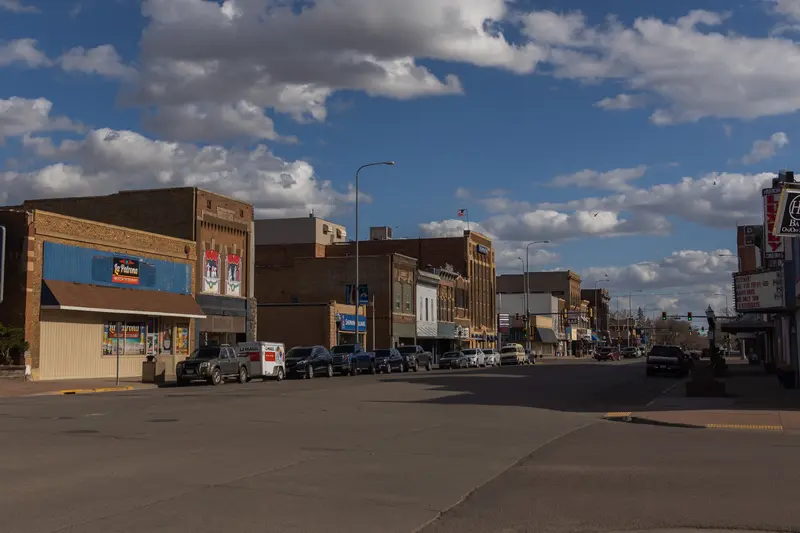
Under ICWA, the judge had to determine that the evidence proved “beyond a reasonable doubt” that returning custody to Hinojosa was “likely to result in serious emotional or physical damage to the child.” When Congress wrote the law, lawmakers chose this standard of proof because they believed that separating parents and children “is a penalty as great, if not greater, than a criminal penalty.”
Hinojosa’s attorney, Doug Kludt, was optimistic that she had made enough progress to provide a compelling argument for retaining her parental rights. She had completed an eight-week substance abuse program the day before the hearing.
“I thought it was real possible,” he said.
ICWA also mandated that Hinojosa’s tribe receive notification from Social Services about the termination and be allowed to intervene. But no one from Hinojosa’s tribe was in court, even though Social Services had contacted the ICWA offices of the Lower Brule Sioux Tribe many times.
Under ICWA, the court also had to hear testimony from a “qualified expert witness” to provide an assessment of the case from the perspective of someone familiar with the cultural and social norms of the tribe. Raymond Cournoyer testified that, based on his experience as a member of the Yankton Sioux Tribe, the termination of Hinojosa’s rights was best because “drugs and alcohol use is not the Native American way to live your life.” He acknowledged that his opinion was based entirely on Hinojosa’s Social Services casefile, which did not contain any information about the last nine months of her life, including Hinojosa’s claim — supported by her substance abuse counselor — that she had been sober.
Cournoyer, who is now retired, said in an interview that he does not remember Hinojosa’s case, but if he had known the file was nine months out of date it would have been a “red flag” to him.
Hinojosa’s most recent caseworker took the witness stand to reiterate the conditions of the apartment in 2018 and Hinojosa’s marijuana use at the time. While she acknowledged that Social Services had ended its efforts to help Hinojosa nine months before the hearing and that she’d never seen Hinojosa’s current apartment, she testified that Hinojosa had failed to show progress. She said Hinojosa had no bond with her daughter.
Walton, the behavioral analyst, testified there was marked improvement in Hinojosa’s life over the previous year. She added that, in her opinion, Social Services hadn’t just been absent in Hinojosa’s case, it had actively undermined Hinojosa.
“There was a lot of resistance and a lot of desire to continue to terminate Cheyenne’s parental rights,” she told the court. “That is a very loving little girl. And she loves her mom. So to say that there is no bond is a very, very terrible falsehood.”
Hinojosa testified last. She admitted that she should have complied with Social Services requirements sooner, but said that issues with her husband, with money and with transportation impeded her progress. She said she felt confident she could be a better caregiver using the parenting and life skills she’d acquired.
“I love her with all my heart. She is my life,” Hinojosa said of her daughter. “I think of her when I wake up and when I go to bed.”
On cross-examination, Beadle County State’s Attorney Michael Moore pressed her about why she was unemployed, how she expected to afford food and diapers and why she fell short on some of her goals with Walton. His closing argument was mostly about how Hinojosa had run out of time.
“How long are we supposed to wait then?” Moore said. And how long, he asked, was Hinojosa’s daughter supposed to wait? “They had done stuff — what they could do for 15 months. And they couldn’t get her to do anything.”
“I don’t think we should terminate rights just because somebody is poor and can’t maintain a job,” Kludt argued in response. “A young child deserves to be with her mother.” As to how long Hinojosa’s daughter could wait, he said, “If it’s her natural mother, she can wait a little while. I don’t think we should be on some sort of rigid timetable here.”
Minutes later, Judge Erickson terminated Hinojosa’s rights.
Cheyenne met her second husband, Jose Hinojosa, on a smoke break at the sprawling turkey processing plant where they both worked at the time. She was candid with him about the complications in her life; one of their first conversations, they both said, was about her child welfare case.
“When I’m nervous, I babble. And everything just comes out,” she said.
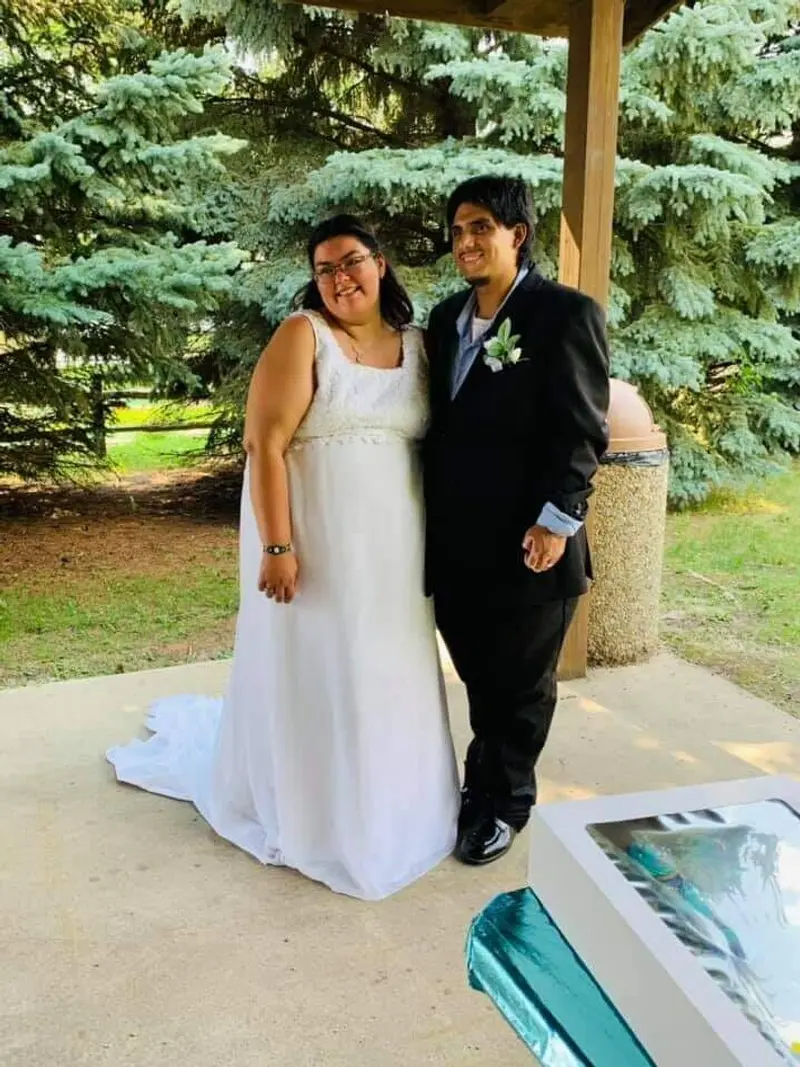
The day before the couple’s wedding, the state Supreme Court reversed the outcome of the termination hearing. In their decision, the justices called out the “glaring defects involving ICWA,” principally the failure to continue efforts to reunify Hinojosa and her daughter. They questioned how Erickson could rule beyond a reasonable doubt that Hinojosa’s daughter was in imminent physical or emotional danger when no evidence had been introduced into the record for the previous nine months. They gave Hinojosa credit for her “ongoing work with counselors on her own accord.”
However, the supreme court’s order did not simply restore custody to Cheyenne. Instead, it ordered that the state “reassess” her, this time following the mandates of ICWA. Social Services essentially started the process all over again, allowing the Hinojosas short, supervised visits with Cheyenne’s daughter. Although the newlyweds were eager to start their own family, her lawyer advised her to wait until the case was closed before having another child.
But it was too late. A month after her wedding, Hinojosa discovered she was pregnant.
“What if they come for this one?” she worried.
On supervised visits with Cheyenne’s daughter, she and Jose told the caseworker they were expecting another little girl and asked if there was any cause for concern.
“Every time we could ask, we asked them, ‘Is she gonna be taken?’” said Jose. “The response was the same: ‘There’s no reason for us to take her.’”
The baby was born in April 2022. Hinojosa and her husband posted photos of the dark-haired newborn on Facebook and sent Snaps and texts to family and friends. The next morning, as Cheyenne was having breakfast with Jose in her hospital room, she looked down at her phone and saw a missed call from her caseworker. When they connected for a brief phone call, her worst fears were realized: Social Services was going to take her younger daughter as well.
“I literally felt the soul leave my body,” she said.
For the next two days before her discharge, Cheyenne and Jose slept as little as possible, passing the baby back and forth, trying to savor their dwindling moments together. When Cheyenne set her down in her bassinet for the last time and turned to leave, the baby let out a little cry. Her parents fell apart.
They left the hospital empty-handed and tearful. For the next several days, they stayed with Cheyenne’s mother; the empty crib in their own house was too much to bear.
In one of the earliest court filings in this new case, a Social Services caseworker alleged that the Hinojosas were neglectful. A sworn affidavit from Social Services said “Cheyenne has made little progress” in her older daughter’s case. The court filing made no mention of the fact that Hinojosa’s rights had been restored or the mistakes that the lower court and Social Services had made. It criticized the Hinojosas’ behavior at visitations with Cheyenne’s older daughter, saying they complained too much that she was “exhausting.”
“Jose and Cheyenne do not have the resources to meet” their daughters’ needs, the affidavit read. “Jose and Cheyenne are routinely using their resources for other things such as eating fast food and shopping.”
About a week after the newborn was taken, Cheyenne and her mother huddled around a phone at Kludt’s office. Across the street in a storefront legal office, Jose sat with his lawyer. The prosecutor, the caseworker and a new judge all dialed in.
After the caseworker explained their reasoning for taking custody, the judge ticked off the facts of the case. It appeared the younger daughter’s removal was based entirely on her older sister’s case. The mother had been divorced and remarried. Jose had never had a Social Services case.
After a brief recess, the judge returned custody to Cheyenne and Jose. Hours later, they met their younger daughter’s temporary foster mother at the Social Services office.
“I grabbed that car seat, and I left that office,” said Jose. “I didn't look back.”
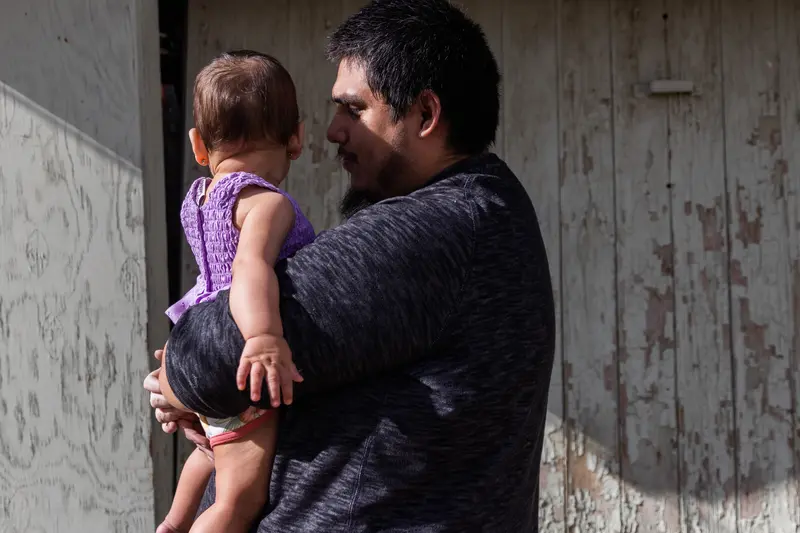
The Department of Social Services did not answer ProPublica’s questions about the legal justification it had for removing the younger child at the hospital. Moore, the prosecutor, said he told Social Services that he thought Cheyenne Hinojosa had shown enough progress to delay termination regarding her older daughter back in 2020.
“Next time, I think that they will listen to me, because of the Supreme Court case,” he said. “It's one of those cases of ‘I told you so.’”
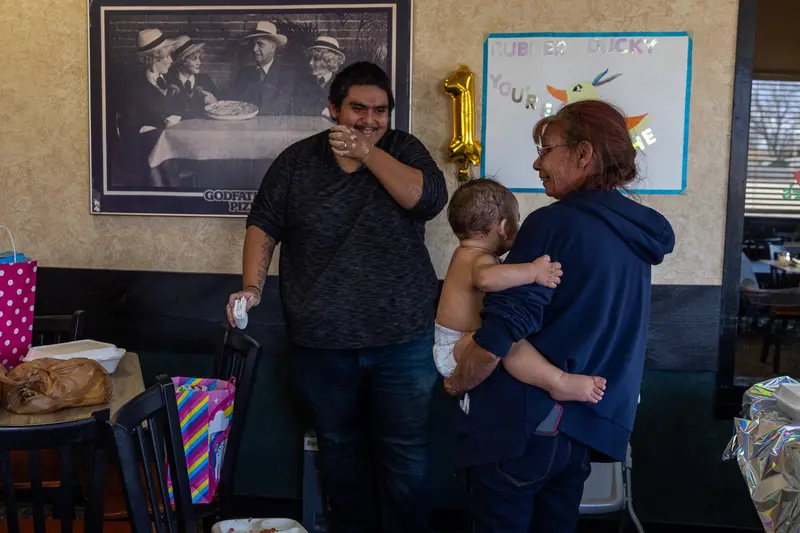
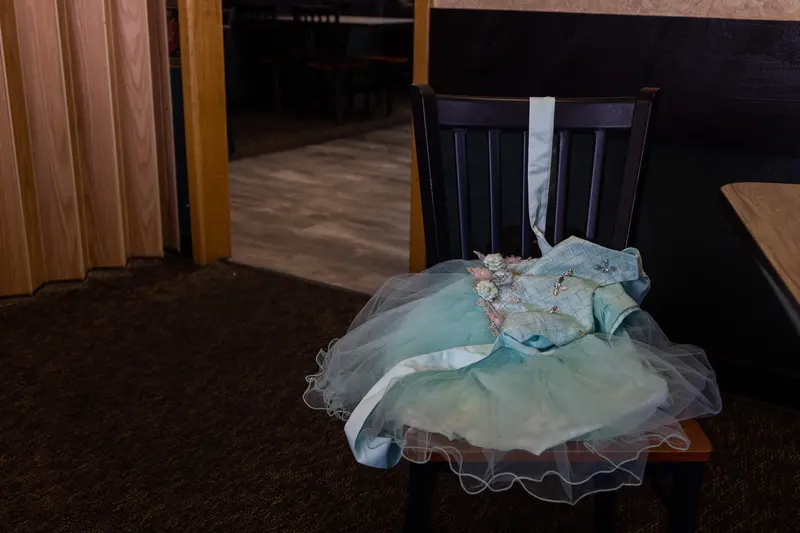
Though the prosecutor stood behind the first case he made against Hinojosa, he conceded that the outcome was the result of trying to enforce two conflicting federal laws — plus the typical human disarray that affects many child welfare cases. It was not, he insisted, an attempt to sidestep ICWA.
“To paint a picture that we’re ignoring this or not following it, I don’t think is fair,” Moore said. “I think that there’s a lot of things that could be done outside of the court system to make this process better.”
For example, he said, in his 30-year career, he has never had a tribe take jurisdiction of a child welfare case and move it to tribal court, which ICWA permits them to do.
“I don’t think it’s necessarily the tribes’ fault. I just don’t think they have the resources,” he said.
Clyde Estes, the chairman of the Lower Brule Sioux Tribe, declined to speak specifically about Hinojosa’s case. But he said his ICWA division is just one person tasked with processing child welfare case requests for the tribe’s roughly 4,500 members, the vast majority of whom live off the reservation. The tribe does not have an ICWA attorney, and as one of the smallest tribes in South Dakota, it has little money and relies mostly on financial support from the federal Bureau of Indian Affairs to fund its ICWA work.
“It really puts us in a tough bind,” he said.
Estes said that things will only get worse if the U.S. Supreme Court strikes ICWA down. While states like North Dakota and Colorado have recently enshrined ICWA tenets into state law, similar bills in South Dakota died during the last session. The state legislature also would not approve the creation of a task force to study the disproportionate impact of the child welfare system on Native American children, a lack of action Estes called “heartbreaking.”
In response, several of the state’s tribes announced their intention to start their own study.
“This is a very serious issue for the future of our children,” said Estes. “They should have the option to be in a Native home on their own lands. Because that’s who they are. And that’s their identity.”
Although ICWA protections ultimately preserved Hinojosa’s family, the law couldn’t put everything back together. Last Thanksgiving, Hinojosa’s family was as close to being whole as it had been in four years. The case with Social Services over her older daughter was still going on, but she and her husband were allowed unsupervised overnight visits. Cheyenne’s older daughter had joined them for the holiday. The Hinojosas’ younger daughter had been back in their care for about seven months and had grown into a chubby, sweet-tempered girl.
Hinojosa’s mother set up tables in the living room. They invited a couple of friends. The spread included ham, mashed potatoes and gravy, chicken and stuffing.
After dinner, Hinojosa realized her older daughter had stopped playing with the other kids and was alone in her room. Hinojosa found the 5-year-old in tears. She said she missed her foster mother and siblings.
“I want to go home. I want to go home,” Hinojosa remembers her saying.
After she calmed her down and put her to bed, Hinojosa went into the basement, where the sound of her own crying wouldn’t be heard. A feeling that had been building for weeks crashed to the surface. She wondered if the long, disruptive process of regaining custody had somehow harmed her daughter.
In the years since she’d been living with an aunt in another town, Hinojosa’s daughter had been diagnosed with emotional disorders and was experiencing developmental delays. Her foster mother had found a school that was helping her achieve her milestones. Many of her doctors were there, too. Social Services had made it clear in their reports that they did not believe Hinojosa understood her daughter’s conditions or had the resources to take care of her. Hinojosa felt a sense of inevitability, certain they were heading towards another termination hearing.
And though their relationship had at times been strained over her efforts to regain custody, Hinojosa always thought her older daughter’s foster mother was a wonderful caregiver. The woman had long made it clear she would adopt the girl. The day after Thanksgiving, Hinojosa said she called the foster mother to tell her, “You’ve done an amazing job with her.” (Hinojosa’s older daughter’s foster mother did not respond to several requests for comment.)
In early December, Hinojosa went back in front of Judge Erickson and voluntarily terminated her parental rights for her older daughter. She knew some people would say that she’d just given up.
“I have to do what’s best” for her, she told herself, “even if it’s not with me.”
Because of her relationship with the foster mother, Hinojosa gets to see her oldest daughter regularly, though she has no legal right or guarantee that those visits will continue. She is relieved the case is over, but also haunted by her final decision. She replays the events of the last four years in her mind, she said, hoping that someday she can explain all of it to her daughter.
How We Measured Terminations of Parental Rights Using Foster Care DataProPublica is a nonprofit newsroom that investigates abuses of power. Sign up for Dispatches, a newsletter that spotlights wrongdoing around the country, to receive our stories in your inbox every week.
Update, June 15, 2023: On Thursday morning, the U.S. Supreme Court ruled 7-2 in favor of upholding the Indian Child Welfare Act. Justice Amy Coney Barrett wrote for the majority that the case was about “children who are among the most vulnerable” and that “we reject all of petitioners’ challenges to the statute, some on the merits and others for lack of standing.”
ProPublica is a nonprofit newsroom that investigates abuses of power. Sign up for Dispatches, a newsletter that spotlights wrongdoing around the country, to receive our stories in your inbox every week.
Update, June 15, 2023: On Thursday morning, the U.S. Supreme Court ruled 7-2 in favor of upholding the Indian Child Welfare Act. Justice Amy Coney Barrett wrote for the majority that the case was about “children who are among the most vulnerable” and that “we reject all of petitioners’ challenges to the statute, some on the merits and others for lack of standing.”
Mariam Elba contributed research.
Mariam Elba contributed research.





